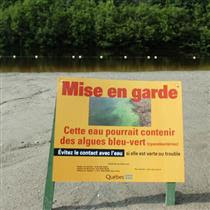The freshwater boom is over. Our rivers are starting to run dry
We can avert global thirst - but it means cutting carbon emissions by 60%. Sounds ridiculous? Consider the alternative George Monbiot
George Monbiot
Tuesday October 10, 2006
The Guardian
Those who dispute that climate change is taking place, such as Melanie Phillips of the Daily Mail, like to point out that that the predicted effects of global warming rely on computer models, rather than "observable facts". That's the problem with the future - you can't observe it. But to have any hope of working out what might happen, you need a framework of understanding. It's either this or the uninformed guesswork that Phillips seems to prefer.
Many parts of the world, for reasons that have little to do with climate change, are already beginning to lose their water. In When the Rivers Run Dry, Fred Pearce, who is New Scientist's environment consultant, travels around the world trying to assess the state of our water resources. He finds that we survive today as a result of borrowing from the future.
The great famines predicted for the 1970s were averted by new varieties of rice, wheat and maize, whose development was known as the "green revolution". They produce tremendous yields, but require plenty of water. This has been provided by irrigation, much of which uses underground reserves. Unfortunately, many of them are being exploited much faster than they are being replenished. In India, for example, some 250 cubic kilometres (a cubic kilometre is a billion cubic metres or a trillion litres) are extracted for irrigation every year, of which about 150 are replaced by the rain. "Two hundred million people [are] facing a waterless future. The groundwater boom is turning to bust and, for some, the green revolution is over."
In China, 100 million people live on crops grown with underground water that is not being refilled: water tables are falling fast all over the north China plain. Many more rely on the Huang He (the Yellow river), which already appears to be drying up as a result of abstraction and, possibly, climate change. Around 90% of the crops in Pakistan are watered by irrigation from the Indus. Almost all the river's water is already diverted into the fields - it often fails now to reach the sea. The Ogallala aquifer that lies under the western and south-western United States, and which has fed much of the world, has fallen by 30 metres in many places. It now produces half as much water as it did in the 1970s.
All this was known before the new paper was published. While climate scientists have been predicting for some time that the wet parts of the world are likely to become wetter and the dry parts drier, they had assumed that overall rainfall would rise, as higher temperatures increase evaporation. At the same time - and for the same reason - soils could become drier. It was unclear what the net effects would be. But the new paper's "drought index" covers both rainfall and evaporation: overall, the world becomes drier.
Even this account - of rising demand and falling supply - does not tell the whole grim story. Roughly half the world's population lives within 60 kilometres of the coast. Eight of the 10 largest cities on earth have been built beside the sea. Many of them rely on underground lenses of fresh water, effectively floating, within the porous rocks, on salt water which has soaked into the land from the sea. As the fresh water is sucked out, the salt water rises and can start to contaminate the aquifer. This is already happening in hundreds of places. The worst case is the Gaza Strip, which relies entirely on underground water that is now almost undrinkable. As the sea level rises as a result of climate change, salt pollution in coastal regions is likely to accelerate.
As these two effects of climate change - global drying and rising salt pollution - run up against the growing demand for water, and as irrigation systems run dry or become contaminated, the possibility arises of a permanent global food deficit. Even with a net food surplus, 800 million people are malnourished. Nothing I could write would begin to describe what a world in deficit - carrying 9 billion people - would look like.
There are four possible means of adapting to this crisis. One is to abandon regions that are drying up and shift production to the wettest parts of the world - the Amazon and Congo basins, for example. But as these are generally the most forested places, this will lead to a great acceleration of climate change, and of the global drying it's likely to cause, as the carbon in the trees is turned to carbon dioxide. Another is to invest in desalination plants. But even the new desalination technologies produce expensive water, and they use a great deal of energy. Again this means more global warming.
Another is to shift water, on a massive scale, to the drying lands. But vast hydro-engineering projects have seldom succeeded in helping the poor. Giant dams and canals - like the Narmada system in India, the Three Gorges in China and Colonel Gadafy's "Great Man-Made River" - are constructed at stupendous cost. Then, when no further glory can be extracted by the government officials and companies who built them, the fiddly work of ensuring the water reaches the poor is forgotten, and the money is wasted. As Fred Pearce shows, perhaps the best method, which in the past has kept cities alive even in the Negev desert, is the small-scale capture of rainwater in ponds and tanks.
But to stand a high chance of averting this catastrophe, we must ensure that the drying doesn't happen. The predictions in the new paper refer to global warming in the middle or at the high end of the expected range. Beneath that point - 2C of warming or so - a great global drying is less likely to occur. As the figures I've published show, to keep the rise in temperature below this level requires a global cut in carbon emissions of 60% by 2030 - which means a 90% reduction in rich nations such as the United Kingdom. It sounds ridiculous . But then you consider the alternative.
· George Monbiot's book Heat: How to Stop the Planet Burning is published by Penguin monbiot.com




